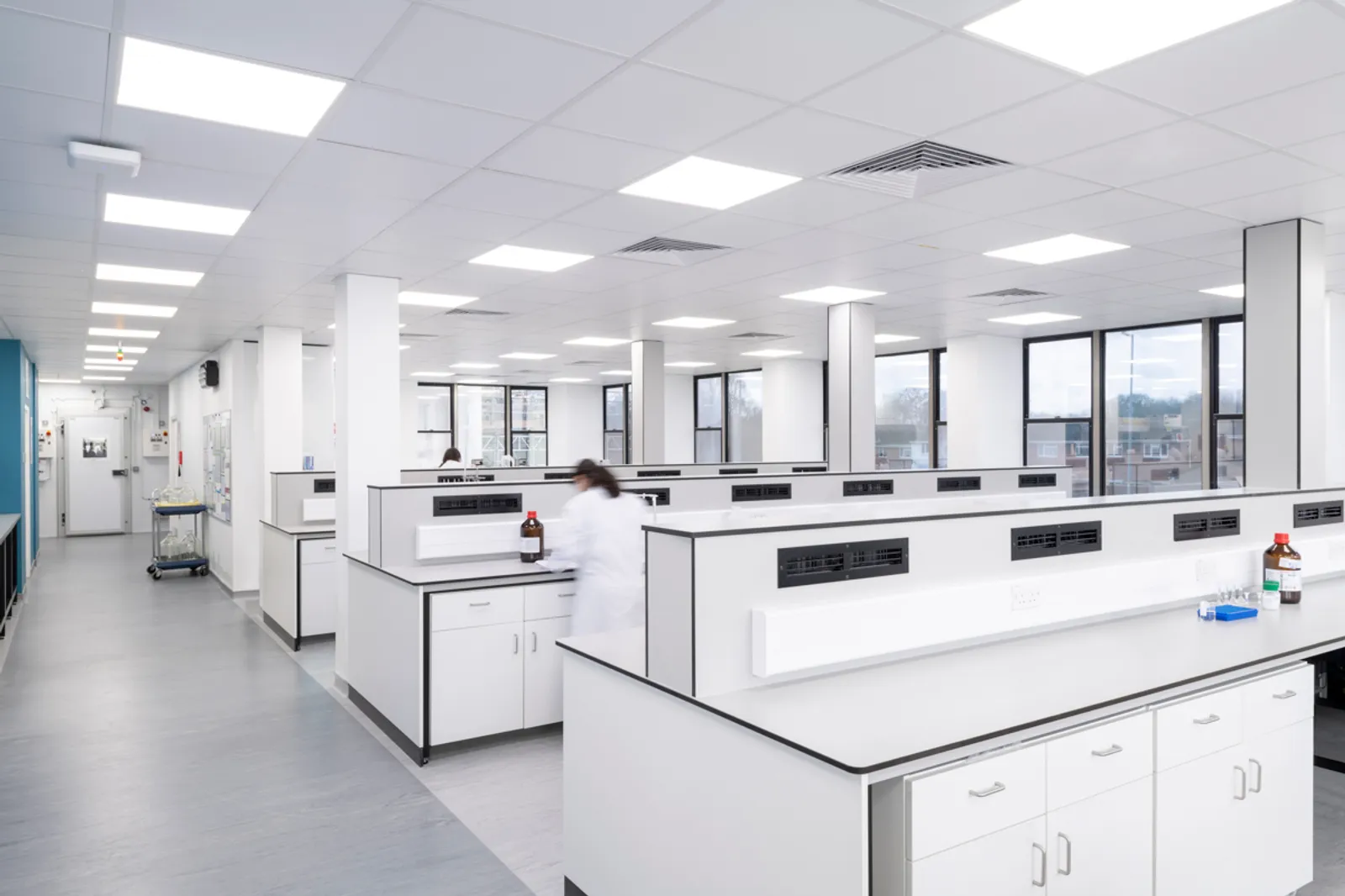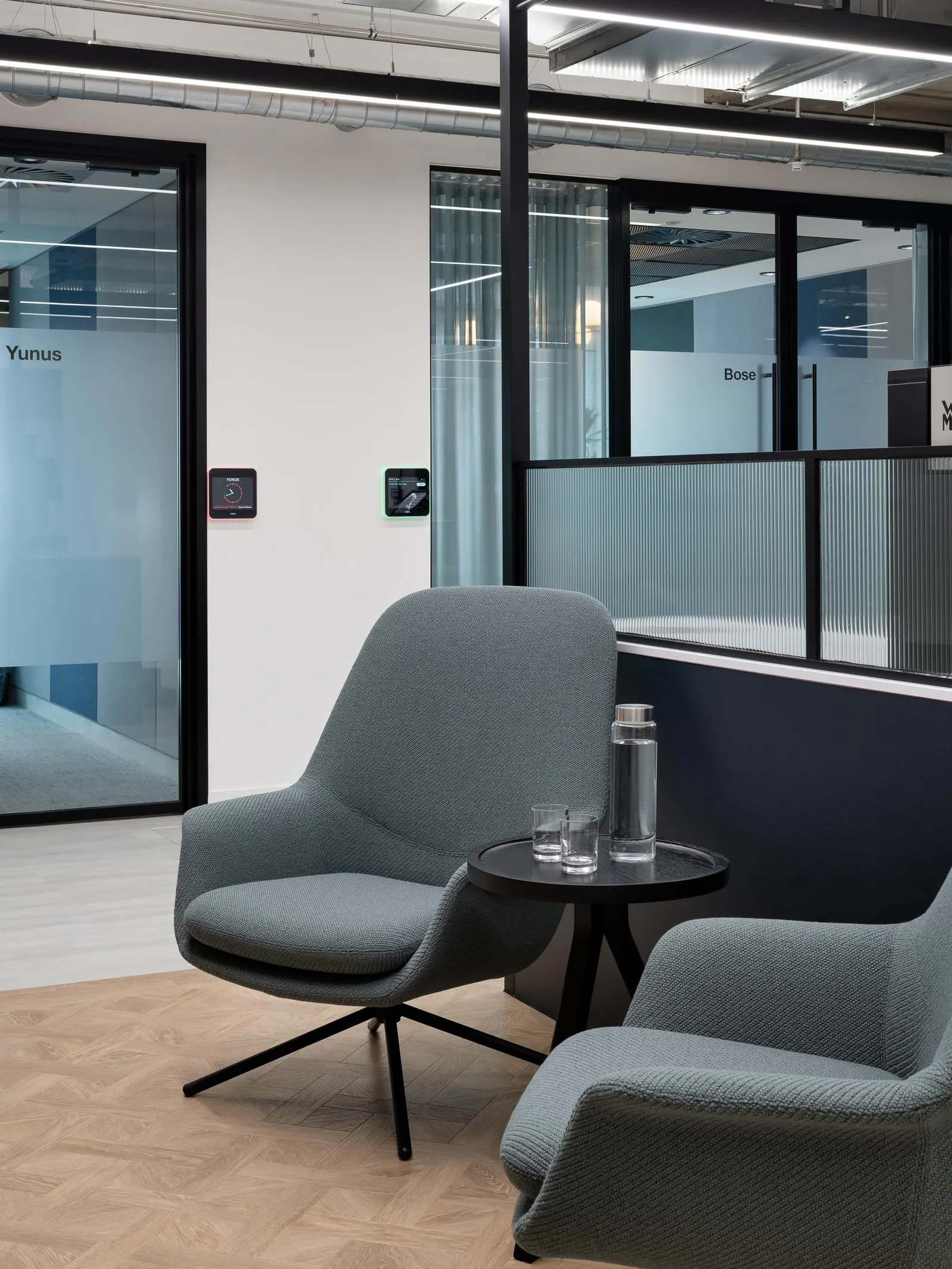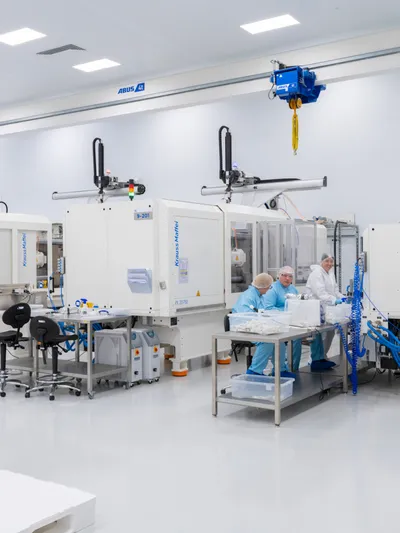The unique equipment used and work conducted in labs means they’re often some of the largest energy consumers in work environments. But it’s not just energy consumption that defines laboratories as eco-offenders. Materials, waste, and resource use contribute to a larger environmental footprint.
While sustainable lab design practices may look like they lead to a more expensive project, the opposite is generally the case. A sustainable lab is not just a financial investment but one that enriches the lives of those who work in and around the lab too.
We’ve come a long way from the labs of the past. However, the education of lab owners and staff, as well as wider stakeholders, is still ultimately at the forefront of any successful sustainably-driven project. Let’s delve in.

What is Sustainable Laboratory Design?
Sustainable laboratory design is the process of planning, building and operating labs so they minimise their environmental impact over their full life, while remaining safe, compliant and scientifically robust.
In practice, it brings together:
Energy efficiency – reducing heating, cooling, ventilation and equipment loads in spaces that are naturally energy hungry.
Water stewardship – cutting water used in cooling, autoclaves, glasswashers and purified water systems.
Low carbon materials – selecting durable, responsibly sourced materials and designing for reuse and refurbishment rather than demolition.
Waste and consumables – reducing single-use plastics, improving recycling and choosing lower-impact lab products.
People and processes – ensuring ventilation, lighting, acoustics and layouts support health, wellbeing and safe scientific practice.
Why Sustainability Matters in Laboratory Design
Truly effective sustainability starts at the beginning of a lab’s creation. Decisions taken at brief and concept design stage will lock in performance – and cost – for decades.
A lab that is designed sustainably from the ground up:
uses far less energy and water
is easier and cheaper to maintain
can adapt more readily to new research demands
supports an organisation’s climate and ESG commitments.
Many lab owners remain hesitant to adopt sustainable practices in favour of seemingly cheaper alternatives that bring down headline capital cost. In reality, design and specification choices that marginally increase build cost often deliver strong whole life value through reduced energy, water and maintenance spend.
Sustainability also matters beyond the balance sheet. Well-designed labs can improve comfort and well-being for users, and visible investment in sustainable space sends a clear signal to partners, funders and prospective employees.
Cost, Compliance and Carbon Reduction
Labs are often responsible for a disproportionate share of emissions and running costs. Reducing this footprint is one of the most direct ways organisations can control spend and meet carbon targets.
From a cost and compliance perspective, sustainable design helps you to:
- Reduce operating costs
Smart ventilation, efficient plant, heat recovery and high-performance equipment cut energy use significantly when compared with conventional designs.
Structured operational changes, such as better fume hood management or cold storage optimisation, routinely generate measurable savings across portfolios of labs.
- Support net zero and ESG goals
Because labs use so much energy, optimising them has a direct impact on Scope 1 and 2 emissions.
Lab-focused frameworks allow you to quantify reductions in energy, water and waste, which is increasingly important for reporting and assurance.
- Stay ahead of regulation
Building and carbon regulation in the UK, Europe and the US is tightening in line with net zero pathways.
Labs designed to recognised standards such as BREEAM or LEED are better placed to comply with current and future requirements without expensive retrofit work.
In short, investing time in sustainability at the concept design stage prevents unnecessary energy spend and carbon emissions over the life of the lab.
Wellbeing, Safety and Reputation
Sustainable laboratory design is also about creating spaces that support people. Many of the measures that reduce environmental impact also enhance health, safety and user experience.
- Wellbeing and productivity
Labs that make best use of daylight, fresh air, good acoustics and comfortable temperatures create a better working environment.
Low VOC materials and well-controlled ventilation support good indoor air quality, which is particularly important in spaces where people spend long periods focusing on complex tasks.
- Health and safety
Smart, demand-led ventilation systems maintain or improve safety while avoiding unnecessary high air change rates when spaces are unoccupied or operating at low risk.
Programmes designed for labs, such as LEAF and My Green Lab, explicitly align sustainability actions with health and safety requirements, reinforcing safe operating culture rather than undermining it.
- Brand, talent and partnerships
A visible commitment to sustainable laboratories helps attract researchers, students, funders and partners who expect organisations to demonstrate environmental responsibility.
Flagship sustainable projects become part of an organisation’s story and can be used to engage staff, visitors and the wider community.
For many organisations, a sustainable lab is both a practical investment and a powerful statement about their values.
Standards for Sustainability
Framework | Details |
The Green Building Council operates LEED as one of the most internationally recognised certification programmes for cost-saving, efficient green buildings promoting health and wellbeing. | |
Building Research Establishment Environmental Assessment Method (BREEAM) | The international BREEAM scheme provides third-party certification of the sustainability assessment of buildings and infrastructure projects. |
A standard that supports the health and wellbeing of occupants through sustainable design and policy interventions in buildings. | |
These standards set out the standards for designing energy-efficient buildings. | |
US & Canada biased but sector-specific certification. | |
Originating from the world of academia, LEAF involves laboratories making small, achievable actions to cut down their environmental impact. | |
Environmental assessment tool for non-domestic buildings run by the Royal Institute of Chartered Surveyors (RICS). |

Practical Ways to Implement Sustainable Designs
We need to think pragmatically in lab design to incorporate sustainable design principles. We know that any decision we make will impact other important factors in the overall project. How will sustainable choices in materials affect hygiene and safety? How will layout and lighting affect ergonomics and accessibility? We need to be able to navigate this delicate balancing system, taking each lab's unique functions and risks into consideration too.
Staying on the cusp of modern lab design is paramount so we can take advantage of new and innovative lab technology and engineering. It’s vital as designers that we retain the tried and trusted elements of traditional lab design whilst exploring and harnessing lab design trends of the future.
Reducing Energy Use & Operational Carbon in Laboratories
Energy strategy is the single biggest lever for carbon and cost reduction in labs. Focus on:
Demand-led ventilation – variable air volume and smart controls that adjust air change rates and fume hood flows to real occupancy and risk, not fixed 24/7 settings.
Efficient HVAC and heat recovery – high efficiency chillers, boilers or heat pumps with heat recovery on exhaust air, and a clear move towards all-electric, low carbon systems.
Right-sized, efficient equipment – standardise on efficient models for high-load kit (ULFs, incubators, environmental rooms), avoid oversizing and consolidate shared equipment where practical.
LED lighting and smart controls – all-LED schemes with occupancy and daylight sensors, plus task lighting at benches so background levels can be lower.
Onsite renewables and active monitoring – integrate solar PV and, where viable, ground or air source heat pumps, underpinned by metering and dashboards that make performance visible and drive continuous optimisation.
As holders of verified science-based targets, Area can also help you map lab energy performance directly to your wider corporate carbon reduction goals and reporting.
Low-carbon Materials, Embodied Carbon & Circularity
New labs and major refurbishments carry a significant embodied carbon footprint. Sustainable lab design addresses the carbon built into the structure and fit out by:
Choosing low carbon structures and envelopes – using mass timber or hybrid systems where appropriate, and optimising insulation and airtightness without defaulting to high impact materials.
Reusing existing assets – retaining and refurbishing buildings, casework, shelving and services where they are safe, compatible and fit for purpose.
Specifying responsible, healthy materials – certified timber, low VOC finishes and products with clear environmental data, while avoiding particularly high carbon or problematic materials where alternatives exist.
Designing for adaptability – modular furniture, demountable partitions and accessible services that allow labs to be reconfigured without wholesale demolition.
Planning for circular construction and fit out – clear construction waste strategies and estate-wide approaches to reusing and redeploying components across projects.
Embedding circularity in lab design reduces embodied carbon and creates spaces that are more flexible, resilient and valuable over the long term.
Managing Water Usage in Laboratories
Water is a critical resource in laboratories, but it is often overlooked compared to energy. Autoclaves, glasswashers, cooling systems and purified water production can all drive high consumption and cost.
Sustainable labs address water in three main ways:
1. Reduce unnecessary consumption
Eliminate single pass cooling on condensers and equipment; replace with closed loop chillers or connect to central chilled water systems.
Specify low flow taps, showers and WC cisterns, or retrofit aerators and flow restrictors where full replacement is not viable.
Choose water efficient autoclaves and glasswashers and ensure they operate with full loads rather than partial cycles.
2. Optimise lab specific water processes
Match water quality to the task: use tap water for pre rinsing and cleaning where appropriate, reserving deionised or reverse osmosis water for tasks that genuinely require it.
Replace water ring pumps and aspirators with dry vacuum pumps and alternative technologies to avoid continuous water flow.
3. Reuse and manage water responsibly
Design rainwater harvesting systems to provide non potable water for toilet flushing and landscape irrigation.
Consider greywater reuse from sinks and showers for suitable applications, subject to local regulations and risk assessment.
Integrate leak detection and water sub metering into the building management system so leaks and anomalies are spotted early.
Alongside these technical measures, clear procedures and training help ensure water efficient practices are followed day to day.
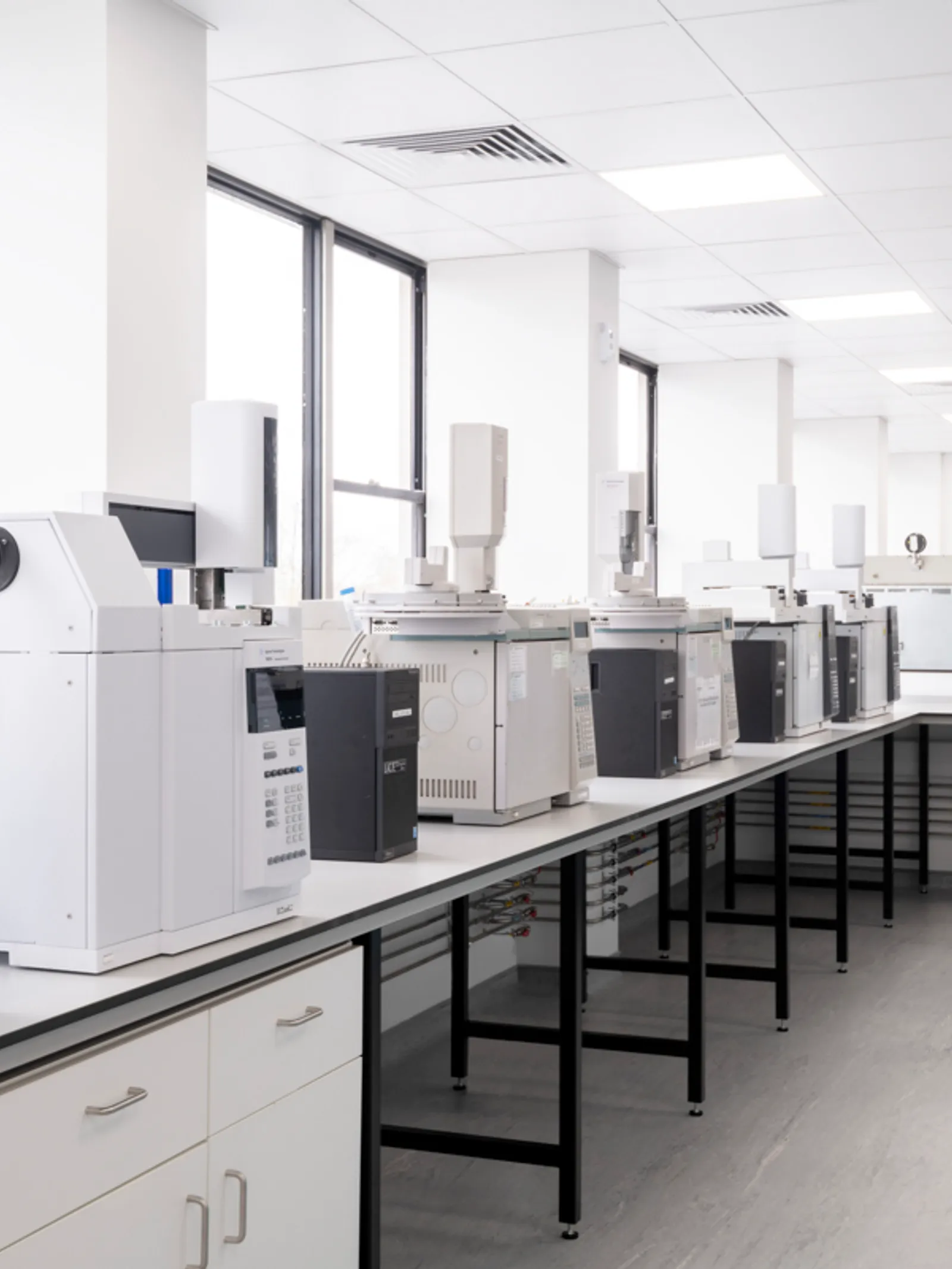
Case Studies: Examples of Successful Sustainable Labs
Today, myriad inspiring sustainable lab projects show us what we’re capable of with intelligent and creative lab design. Let’s look at two examples of labs that work with the plant instead of against it.
HJ Andrews Experimental Forest Headquarters and Lab, Blue River, Oregon, USA
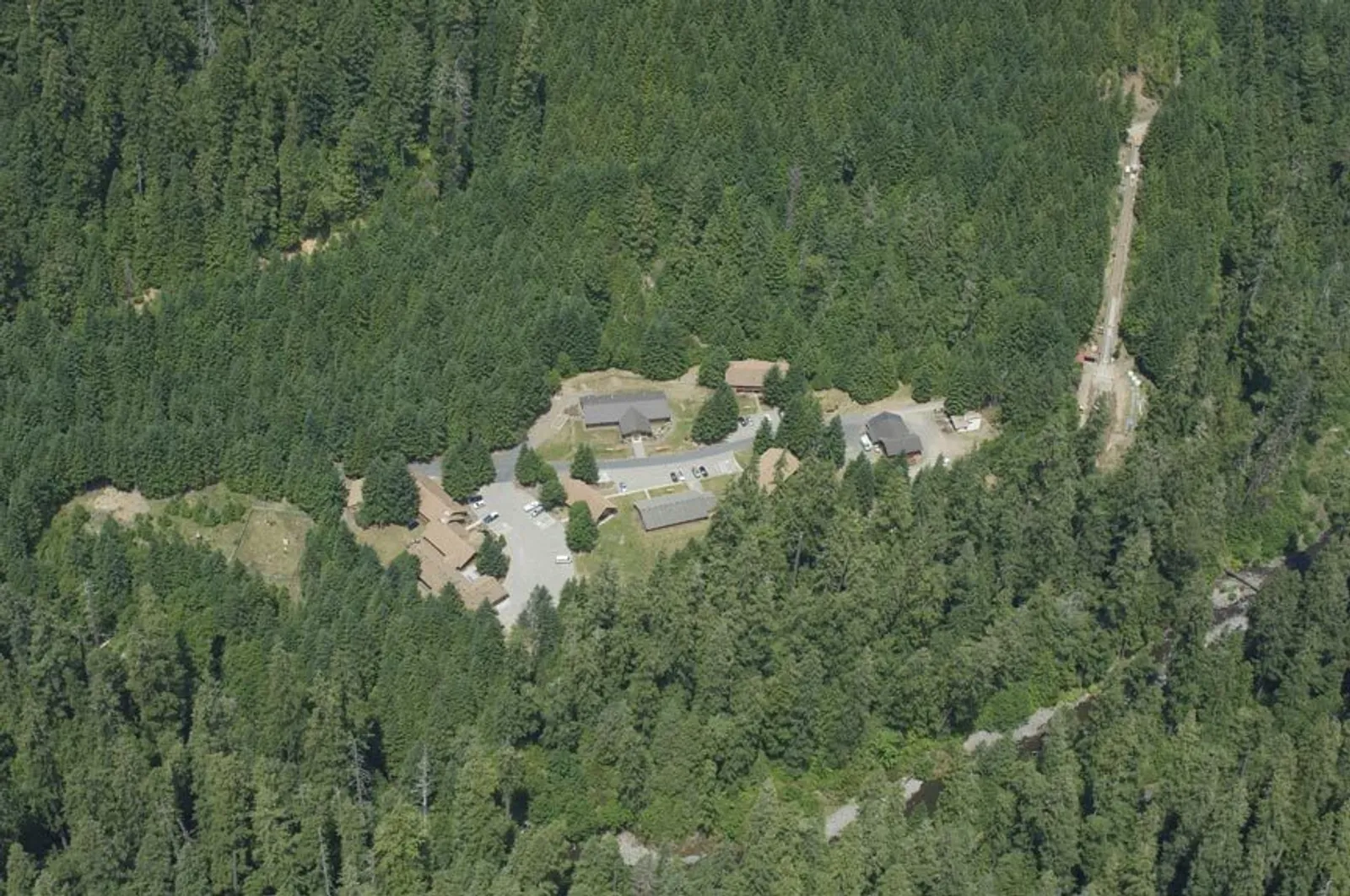
Image source: andrewsforest.oregonstate.edu
Though not often thought of first when the idea of a sustainable lab comes to mind, location can have a significant impact on the environmental footprint of the facility. Construction of a lab should not destroy natural environments and never put species of plant and animal life at risk.
While not a comparatively weighted issue for smaller laboratories, larger lab complexes may face this problem when looking for land to build on.
The HJ Andrews Experimental Forest HQ and lab, which is cooperatively managed by Oregon State University, Willamette National Forest, and the USDA Forest Service’s Pacific Northwest Research Station, is a long-term ecological research site and biosphere reserve situated in a 16,000-acre forest deep in the Oregon Cascades.
Dedicated to conservation and scientific research, the living laboratory holds LEED Gold certification thanks to a recent renovation project which updated existing structures under sustainable principles. The goals: to conserve natural resources and minimise the project’s environmental impact.
The project saw the use of sustainably harvested wood, the installation of passive solar heating and cooling, natural lighting, and stormwater management to reduce runoff and its impact on the surrounding terrain. The site was also landscaped with native and local plants to reduce water consumption.
The buildings preserved the surrounding area, protecting trees, plants, and animal life. Thanks to this sustainably-driven project, the new lab can further ecological research while protecting the ecosystem it sits upon.
The Living Planet Centre, Woking, UK
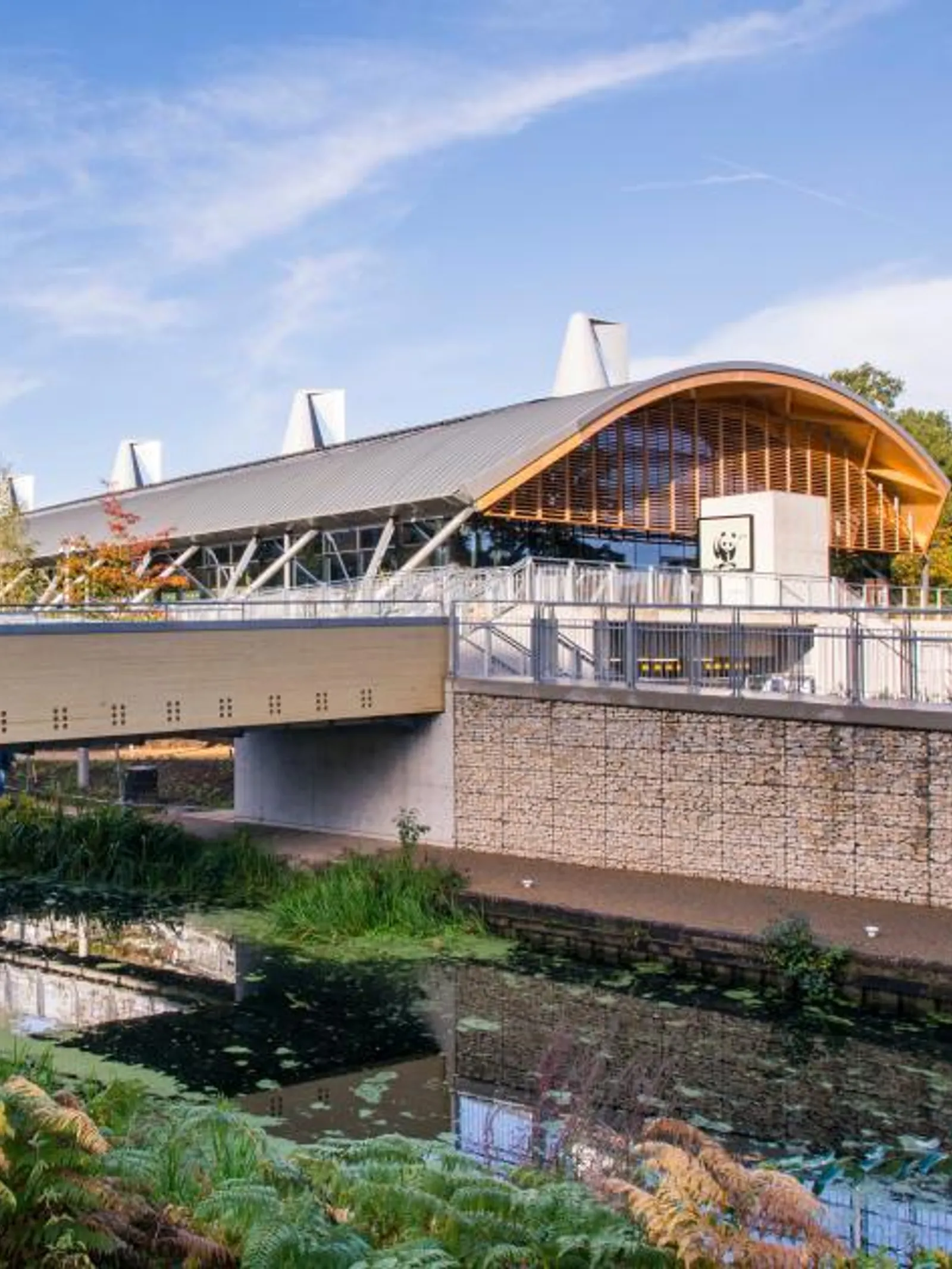
Image source: www.wwf.org.uk
The Living Plant Centre is one of the greenest buildings in the UK, having won several awards for its sustainable construction and design. It has a BREEAM Oustanding rating, the highest available. As such, it is one of the most sustainable buildings in the world.
The Learning Zone, situated in the Living Plant Centre, is a lab specialising in the discovery and research of ecological and environmental subjects and serves to inspire and educate younger generations on issues of sustainability, conservation, and environmental protection.
The site was designed and constructed with sustainable solutions at every stage, including:
100% renewable energy via rooftop solar panels, LED lighting, natural ventilation, and insulation.
Rainwater used for toilet flushing and irrigation.
Low-flow taps and showers to minimise the usage of water.
Buildings constructed with FSC-certified timber.
Native plants in the surrounding landscape to protect the ecosystem and neighbouring Basingstoke Canal, a site of special scientific interest.
Close proximity to public transport links to reduce car emissions from driving to and from the site.
At Area, we put sustainability first in everything we do and forge a path of eco-conscious design for every one of our clients, marrying sustainability with efficiency, cost-saving, and innovation. Get in touch to find out how we can make your lab sustainable.
